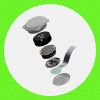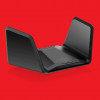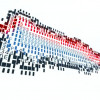Tiny capacitors may overcome physical limits of hard drives
Storage—there is never enough of it. I still remember when I thought my 700MB hard drive was huge... until I tried to copy an entire CD onto it for faster access. After that, I spent a period stuck choosing music to stick on my three GB hard drive. Two weeks ago, I ditched six months' worth of simulation data because my 320GB hard drive was full. One TB of new drive later, and I'm wondering how soon it will be before I start feeling the squeeze again. Maybe never, if some of the latest research coming out of Korea and Germany bears fruit.
One of the cool things about hard drive technology is how it has actually kept pace with computer needs. The basic mechanism for hard drive storage, however, does have some fundamental limitations, which manufacturers will have to deal with fairly soon. Bits are currently stored in the orientation of tiny magnets, called ferromagnetic domains, on a hard drive platter. The smaller the domain, the easier it is for that orientation to be scrambled by temperature or stray electromagnetic fields. At a certain size, thermal photons (e.g., heat energy from the surrounding case or the underlying disk) have enough energy to flip a domain's orientation. Manufacturers will have to keep their domain sizes significantly bigger than that threshold size to ensure data integrity, which puts a ceiling on storage density, one we're rapidly approaching.









































































